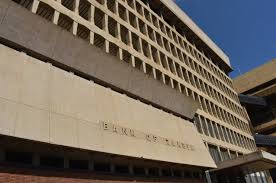Zambia’s Central Bank has decided to keep its main interest rate unchanged at 14.50 percent. This decision comes after two recent hikes in the rate aimed at controlling high inflation in the country. The bank had previously increased the rate by 50 basis points in both November last year and February this year. The move to hold the rate steady was announced on Friday during a press briefing by the Bank of Zambia’s Governor, Mr. Denny Kalyalya.
Mr. Kalyalya explained that inflation in Zambia is expected to slow down over the coming months. The country’s annual inflation rate stood at 16.5 percent in April, remaining the same as in March, and still above the bank’s target range of 6 to 8 percent. However, the bank’s latest forecast suggests that inflation will drop faster than earlier predicted.
“The forecast over the next eight quarters shows inflation will come down towards the target band of 6 to 8 percent faster than we thought back in February,” Mr. Kalyalya said. The central bank now expects the average inflation rate for 2025 to be around 13.5 percent. This is a slight improvement from the 14.6 percent average inflation forecast announced during the bank’s February monetary policy meeting.
Zambia’s economy is also showing signs of stronger growth than initially expected. The Bank of Zambia revised its economic growth forecast for 2024 to 4 percent, up from 1.2 percent in the earlier forecast. This revision follows better-than-expected economic performance, despite the country facing severe drought conditions in recent months.
Inflation and economic growth are key indicators that the central bank considers when setting its Monetary Policy Rate (MPR). The MPR is a tool used to influence borrowing costs, consumer spending, and overall economic activity. When inflation is high, central banks often raise interest rates to make borrowing more expensive, reducing spending and slowing down inflation. Conversely, when inflation is under control, central banks may hold rates steady or lower them to encourage economic growth.
Zambia’s inflation has been a concern for the government and financial authorities for some time. The persistent rise in prices has affected the cost of living for many Zambians, making everyday goods and services more expensive. The central bank’s efforts to control inflation through rate hikes are part of a broader economic strategy to stabilize prices and support sustainable growth.
The country’s agriculture sector, which contributes significantly to the economy, faced challenges due to drought, impacting food supply and prices. Nevertheless, other sectors of the economy have performed well, helping to boost overall growth prospects. The government and financial institutions continue to monitor the situation closely to balance inflation control with economic expansion.
In the press conference, Governor Kalyalya also reassured the public and investors that the Bank of Zambia remains committed to maintaining price stability and supporting economic development. He emphasized the importance of coordinated efforts between monetary policy, fiscal policy, and other economic reforms to ensure the country’s financial stability.
Zambia’s decision to keep interest rates unchanged while expecting inflation to slow down mirrors trends seen in other African countries facing similar inflationary pressures. Many central banks on the continent are carefully adjusting their monetary policies to protect their economies from overheating while fostering growth.
For now, the steady interest rate is expected to provide some relief to borrowers and businesses by keeping borrowing costs stable. It also signals confidence by the central bank that inflation is beginning to ease and the economy is on a more positive trajectory.
The Bank of Zambia’s monetary policy actions will continue to be watched closely by market participants, economists, and international investors as Zambia navigates the challenges of inflation and economic recovery
